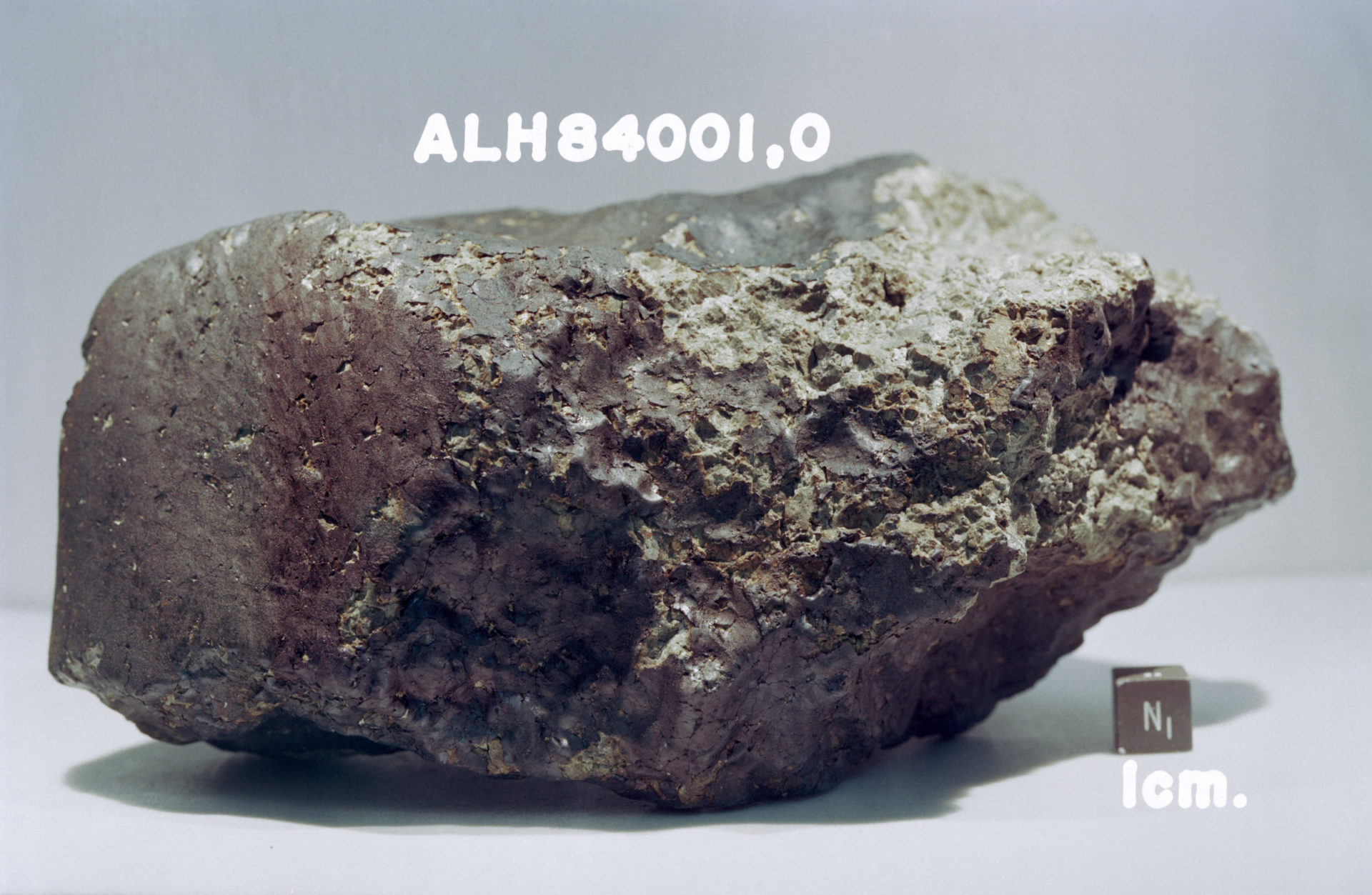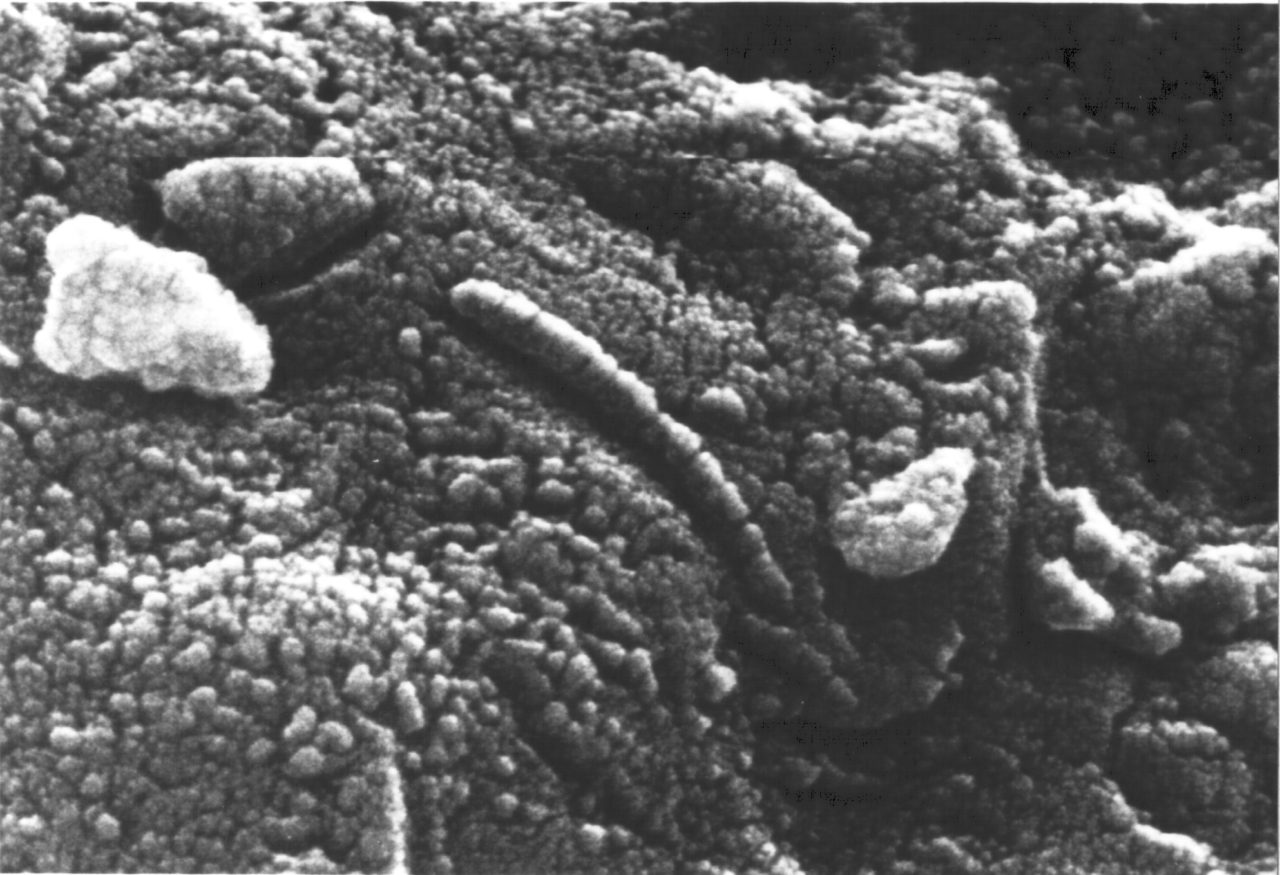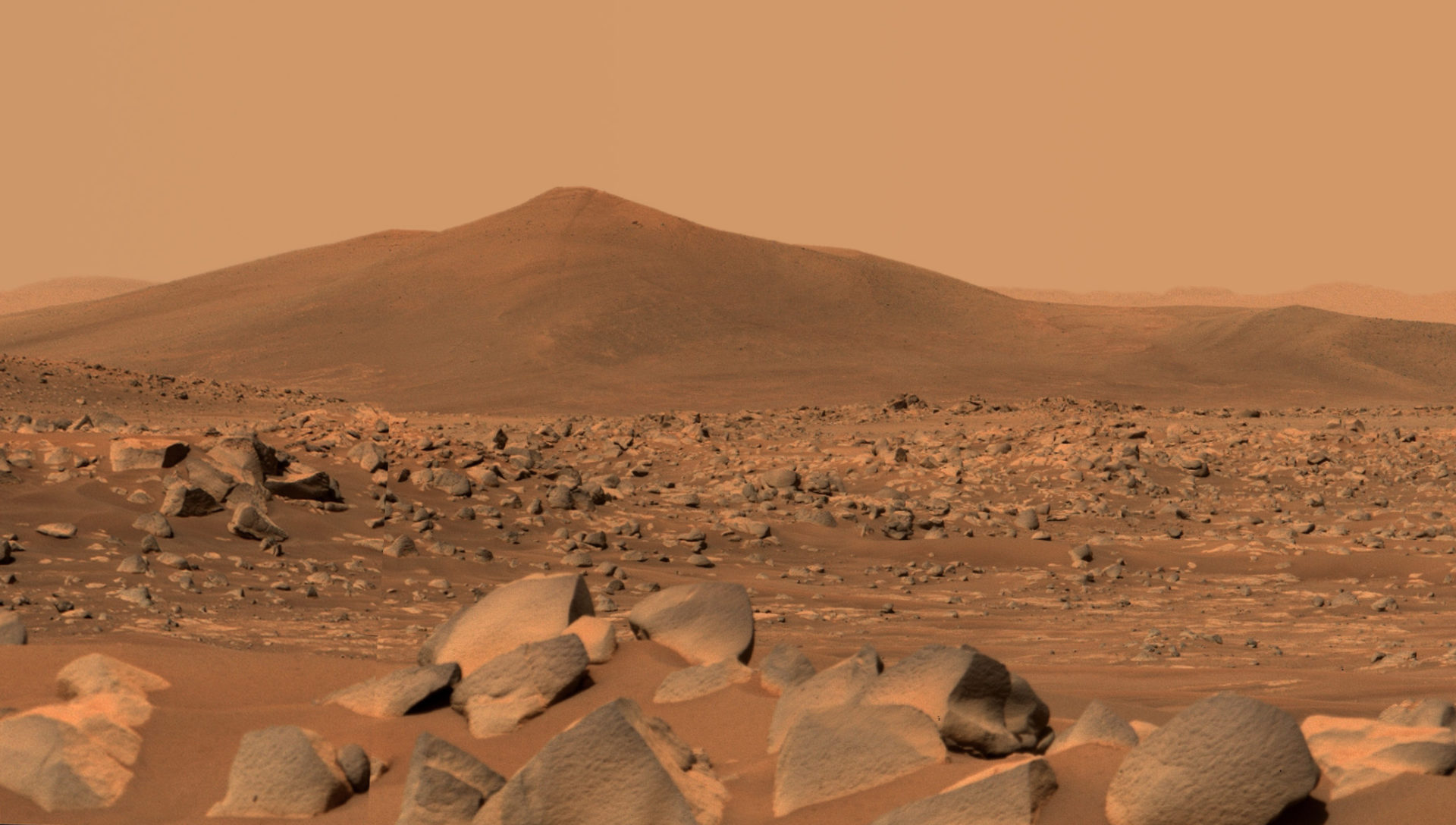

Was the appearance of life on Earth likely or was it an anomaly? Did this same event also happen on billions of other planets that had similar conditions to ours, or was it the result of freak chance? Are the “universal” features of life on Earth, like the twenty amino acids to build proteins and the DNA and RNA used for genetic information, truly universal, or are they just one example of a vast tapestry of possibilities for how life can be?
These are how people today pose fundamental questions — What is the nature of life? Are we alone in the universe? — that thinking men and women have wondered about for thousands of years. We may be able to find the answers by exploring Mars.
In fact, of all the worlds in the cosmos, Mars may actually be the best one for seeking answers to these questions. The early Mars was similar to the early Earth. Both were warm and wet rocky planets with an atmosphere dominated by carbon dioxide. Both had volcanoes releasing gases that contained the elements of organic chemistry: carbon, hydrogen, nitrogen, and oxygen. Meteor impacts on both worlds could have created the atmospheric conditions necessary to turn these atoms into the building blocks of life. If life could originate and evolve on one planet, it might have done so on the other as well, even if not in the exact same way.
So life might well have emerged on Mars, yet not be so exotic as to escape our recognition, as we could more easily imagine being the case on planets formed in other solar systems. Further, Mars is accessible to the best life-finding agent we have: humans.
The search for life ought to be the great passion animating Mars exploration. But it has not been a goal for NASA. In fact, NASA’s public relations department frequently claims that the agency’s Mars exploration program is meant to “seek signs of life.” They say this because they know that it is what the public is — rightly — interested in. Unfortunately, the claim just isn’t true. NASA’s Mars robotic exploration program is actually focused on geological research, while its planned human Mars exploration program — inasmuch as it exists at all — is not being designed to properly support scientific exploration of any kind.
The last time our space agency conducted experiments to identify signs of living microbes on the planet was in 1976. The 2012 Curiosity rover was meant only to find out “if Mars was ever able to support microbial life,” and the 2021 Perseverance mission was to collect geological samples for later retrieval and perhaps find signs of ancient life — neither aimed at finding living things on the planet today.
Despite what it says, NASA has actually made the decision not to look for present life on Mars, even though tools that could identify life have been available to the agency for twenty years. Even worse, NASA’s existing rovers operating on Mars are being directed to avoid areas most likely to harbor life, and its plans for future human exploration are being designed in a way that would minimize their exploratory capability.
What in the world is NASA thinking? And how can we get the agency back on the path to finding life?
A major impediment to an effective search for life on Mars is the idea of “planetary protection” — that we need to protect Earth from spaceborne plagues, and other planets from Earth germs. Those who advocate strict regulations often point to a line in the Outer Space Treaty of 1967, which requires that any exploration of celestial bodies be conducted in such a way “as to avoid their harmful contamination and also adverse changes in the environment of the Earth resulting from the introduction of extraterrestrial matter.”
NASA’s Planetary Protection office has interpreted that line to mean that we need extremely restrictive regulations, which make all robotic missions to Mars significantly more complicated and expensive, adding delays and limiting their ability to return good science.
The planetary protection rules are even more demanding for missions focused on searching for present life on Mars, and so no such missions are being done, even with robots. In particular, these regulations aim at protecting what are called “special regions.” These are areas most likely either to contain indigenous Martian life or to allow terrestrial organisms to replicate, meaning areas that contain significant amounts of water at certain temperatures. The aim of avoiding contamination in these regions effectively forces missions to avoid the regions altogether. Were the rules to remain in effect, they would make human missions to the Red Planet entirely impossible.
But do these regulations make any sense?
The worry that Martian microorganisms might pose a risk to life on Earth is unfounded. If that kind of contamination is possible, it has probably already happened. As a result of asteroid impacts on Mars, substantial natural material gets flung from there to Earth all the time. This is why you can buy rocks from Mars (from a reputable dealer). A plausible estimate is that 500 kilograms of Martian meteoric material lands on Earth every year. That rate was undoubtedly much higher in the solar system’s younger years, when many more objects were flying around and hitting planets.

Some of the Mars meteorites have been studied in detail. The Allan Hills meteorite found in Antarctica in 1984 is especially noteworthy, because of controversial claims that the rock might contain evidence of Martian life. Those studies showed that during the meteorite’s entire career, starting with its ejection from Mars, a cruise through space, and re-entry and landing on Earth, major portions of the meteorite were never raised above 40 degrees Celsius, an easily survivable temperature for many forms of bacteria — the FDA recommends cooking poultry to 74 degrees Celsius. If Allan Hills or a similar meteorite had housed microbes on Mars, they would likely have survived the trip. While most meteorites spend hundreds of thousands or millions of years in space on the way from Mars to Earth, some arrive in as few as a hundred years. And bacterial spores on Earth have been revived after as long as 250 million years of isolation.

If microbes of any type live in Martian surface materials, they don’t need our spacecraft to get here. They have plenty of their own. If the Red Death could come to Earth, it already has. That means that planetary protection rules seeking to impose strict controls on accidental microbial transport by spacecraft make about as much sense as ordering the border patrol to search all entering cars in order to block the importation of Canada geese.
This reality puts paid to the “back contamination” scenario raised by anti-space demagogues and Hollywood filmmakers — that human exploration of Mars, or even a robotic mission returning Mars samples, could transport Martian plagues back to Earth. The idea is science fiction, because pathogens require a host, and the two must co-evolve. No pathogens that adapted to infect Earth life are present on Mars because there is no macrofauna or macroflora of any type there, let alone of any terrestrial type, to serve as their host.
Living organisms that adapted to the Martian environment may actually exist there — “extremophiles” in the sense that the Martian environment appears extreme to Terran life forms. However, if transported to the very different terrestrial environment, Martians would be as unlikely to prosper here in competition with local organisms as would sharks if they were delivered to lions’ home turf on the African savannah. So we need not fear a microbial ecological disaster caused by immigrating Martian bugs.
The more serious concern that planetary protectionists raise is “forward contamination” — the possibility of transferring microbes from Earth to Mars. According to this idea, all spacecraft (and presumably astronauts) traveling to Mars must be thoroughly sterilized, both because microbes that evolved on Earth might find a niche on Mars and survive there, and because we would not be able to tell whether any microbes we find on the Red Planet are indigenous. In this view, contamination from Earth is “harmful” because it risks the loss of science by preventing our ever knowing whether we have actually found indigenous Martian life, or just invasive species brought from Earth.
Let’s unpack this idea. We begin by imagining that our exploration of Mars has found a microbe and we have started investigating its biochemistry. We must either dismiss it as a hitchhiker, or verify it as what we might call a Martian Validated Indigenous Native, or MARVIN. There are three general relationships that MARVIN might have to any Terran visitors:
1. MARVIN shares a common ancestor with us and with other life on Earth. This would mean that a space-traveling ancestor moved from one world to the other billions of years ago by natural processes, such as a meteorite. By comparing the genome of the microbes found on Mars to those of microbes on Earth, scientists can identify where the Martian microbes fit on a family tree, and thereby determine how long ago that common, planet-hopping ancestor lived.
Recall the anthrax attacks in 2001, when scientists were able not only to identify the substance as anthrax, but to track down the origin of the bacterial strain to a cow that died in Texas in 1981, and even to identify the very flask from which the anthrax was taken in a Maryland lab. Using modern techniques, we could similarly identify the heritage of any descendants of prehistoric terrestrial microbial immigrants found on Mars today.
Even if MARVIN were identical to a current microbe on Earth, we could still know that it was native to Mars if we also found residues, fossils, or other biomarkers alongside it. All life leaves a trail of evidence of its past existence. This is, after all, how we know there was life on Earth before us, and, for that matter, that past generations of people existed. If the life is native, it will have left its mark. If, on the other hand, we find microbes identical to those found on Earth and there is no evidence of their past existence on Mars, we would know that we brought it.
2. MARVIN does not share a common ancestor with Terran life, but has similar core biochemistry because the two rocky planets supported similar prebiotic chemistry. In this case, MARVIN could not be confused with a Terran hitchhiker, since it would share none of its natural history subsequent to the emergence of Darwinian evolution. On Earth, that natural history was quite contingent on such factors, among many others, as: the cellular process of translating genetic information into proteins, the specific amino acids that are incorporated into those proteins, and which RNA cofactors survived. MARVIN would not share that same history, and would therefore not be the same even if the biochemistry were overall similar.
3. MARVIN emerged from a different prebiotic chemistry, entirely independently of life on Earth. Here again, it could certainly not be confused with a Terran hitchhiker.
Planetary protectionists sometimes raise another concern: that invading Terran microorganisms might drive indigenous Martians to extinction through resource competition. But the Martian environment is extremely hostile to Earth’s microbial life, as Mars lacks liquid water and is bathed in ultraviolet light, which kills our microbes. And just as lions would outcompete sharks landing on the African savannah, native Martian microbes, having eons of evolutionary adaptation to that environment, would have the advantage over any newcomers. Finally, once again, meteorites already provide natural transport of materials not only from Mars to Earth, but the other way around, too. Compared to Mars, Earth has a deeper gravitational well, which makes material less likely to escape, but that does not prevent transport. The meteorite that marked the end of the Age of Dinosaurs probably put millions of tons of unsterilized terrestrial material on Mars. Numerous other impacts have produced similar volleys. If terrestrial microbes could take over the Martian biosphere, they likely would have done so billions of years ago.
There is no reason to let fear of forward contamination prevent us from searching for life on Mars. We should of course sterilize equipment for life-detection experiments themselves prior to use, as a matter of laboratory discipline and to lower the amount of Terran contamination that might make MARVINs more difficult to detect. But there is no more need to sterilize entire expeditions to the Red Planet than there is to do so for similar enterprises seeking exotic life on Earth.
The failure of NASA to recognize all this threatens to prevent the science that the agency is chartered to conduct. For example, in his latest annual “State of NASA” address, agency chief Bill Nelson said that to assure planetary protection, Martian rocks retrieved by NASA’s planned Mars Sample Return mission will not be brought back to Earth, but will instead be delivered to the Moon. But the purpose of the mission is to allow Mars material to be examined in terrestrial labs with the full array of instruments and scientific talent that can be brought to bear on them. Sending them to limited facilities of a station on the Moon would completely negate this purpose.

To understand NASA’s ongoing failure to look for life, let’s focus first on the robotic Mars exploration program, which, while flawed, does have the very important merit of being real. Furthermore, in sharp contrast to the current human spaceflight program, it is purpose-driven, rather than vendor-driven. That is, it spends money to do things, as opposed to doing things in order to spend money. For this reason, the robotic Mars exploration program, like the agency’s highly purpose-driven astronomy program, has been able to accomplish great things. Indeed, it is one of the jewels in NASA’s crown.
Nevertheless, while Mars field geology is certainly real science, and very useful in providing contextual information supporting the search for life, it is not the search for life itself. Further, the current program, which is focused on using the Perseverance rover to gather material to be retrieved by a sample return mission in the next decade — to the exclusion of nearly all other surface exploration — is poorly designed to search the planet for extant life, for fossils, or for other materials of astrobiological interest.
The sample-return mission is valuable. But it has been made far more complex, costly, and risky than necessary by the demands of the planetary protectionists who have inserted a requirement that the mission “break the chain of contact” between the sample-return spacecraft and the Martian surface to ensure that the exterior of the sample container not be contaminated with Martian organisms. If not for this requirement, a Mars sample-return mission could be accomplished using a two-stage ascent vehicle capable of lifting the return capsule from the surface of the Red Planet to Mars orbit, and then sending it on a trans-Earth trajectory. Such a system could be built with a mass of well under 1,000 kilograms, making it deliverable to the Martian surface using the same landing system employed in the Curiosity and Perseverance missions. But because of the planetary protection requirement to break the chain of contact with the surface, the current mission plan has the ascent vehicle perform an autonomous rendezvous and dock with an entirely separate spacecraft positioned in Mars orbit, and then has that spacecraft return the sample back to Earth — or even possibly to the Moon, if the most extreme demands of the protectionists prevail.
Even without the Moon base idea, all this complexity greatly increases the risk of mission failure, not only because of the rendezvous, dock, and sample transfer in Mars orbit — which has never been done — but because the mission will require two launch vehicles and two separate spacecraft, subjecting it to total failure if any one of those four systems should fail. Furthermore, to avoid doubling the mission cost to NASA, the return orbiter will be built by the European Space Agency, making that program vulnerable not only to technical risk, but to great political risk should any of the two dozen governments supporting it have a change of heart.
The even greater problem with the sample-return mission is the fact that it is crowding out all other missions to the Martian surface for the next decade. Mars is a planet with a surface area equal to all of Earth’s dry land put together. It cannot be explored by collecting a few rocks from a single locality. In order to properly explore Mars, NASA needs to supplement the sample-return mission with a program of launching two low-cost spacecraft — which could be orbiters, rovers, drilling landers, or helicopters — to the Red Planet during every launch window (which occur every twenty-six months) for the next decade. These diverse spacecraft could explore many different types of Martian sites with a wide array of instruments. The result would be a rich and robust exploration program, which would emphatically include life-detection experiments sent to several sites of great astrobiological interest. Such sites might include, for example, places where transient liquid water seeps have been observed, locations where a liquid water table is believed to exist within drilling range of the surface, or areas where geothermal activity is suspected.
The exploratory power of this program could then be radically increased by the development of a heavy Mars lander, able to deliver payloads of ten tons or more to the Martian surface. Such a lander would certainly be necessary to get humans to Mars. However, before transporting humans to Mars, the heavy lander could be used to deliver platoons of robots, including rovers and helicopters capable of broad-ranging field exploration, as well as mobile drilling rigs and a substantial laboratory for subjecting the samples being gathered to in-depth analysis.
The heavy lander could then be used to deliver supplies and equipment supporting human expeditions, to place and test habitat modules, power systems, and facilities for manufacturing methane–oxygen rocket propellant out of Martian atmospheric carbon dioxide and water ice. This would not only prepare the way for human exploration, but allow astronauts to engage in long-stay missions on Mars starting with the first landing.
Doing all this is fundamental. Humans completely outclass robots as field explorers. But field exploration takes time. A human mission that stays the full eighteen months on the Martian surface before the optimal return-launch window opens up, instead of pulling out after the thirty-day “flags and footprints” stunt of NASA’s current human mission plan, would offer an order of magnitude greater science return for the same cost. Likewise, to get a given amount of science return, there is an order of magnitude lower cost and risk in doing one long-term mission than a series of such short-stay missions.
Equipped with highly capable field mobility, power, drilling, instrumentation, and laboratory systems, and with the time to put them to good use, human explorers would then be able to travel long distances through difficult terrain, and do the rockhounding, digging, and pickaxe work, the surface and deep subsurface sample-collection needed to not only search for fossils, but to find and determine the nature of any life that is present on Mars right now.
We — not some distant future generation, but we who are alive today — can have the honor of discovering the truth about the prevalence and potential diversity of life in the universe. It is waiting for us on Mars. But we need the courage and wisdom to seek it out.
Exhausted by science and tech debates that go nowhere?